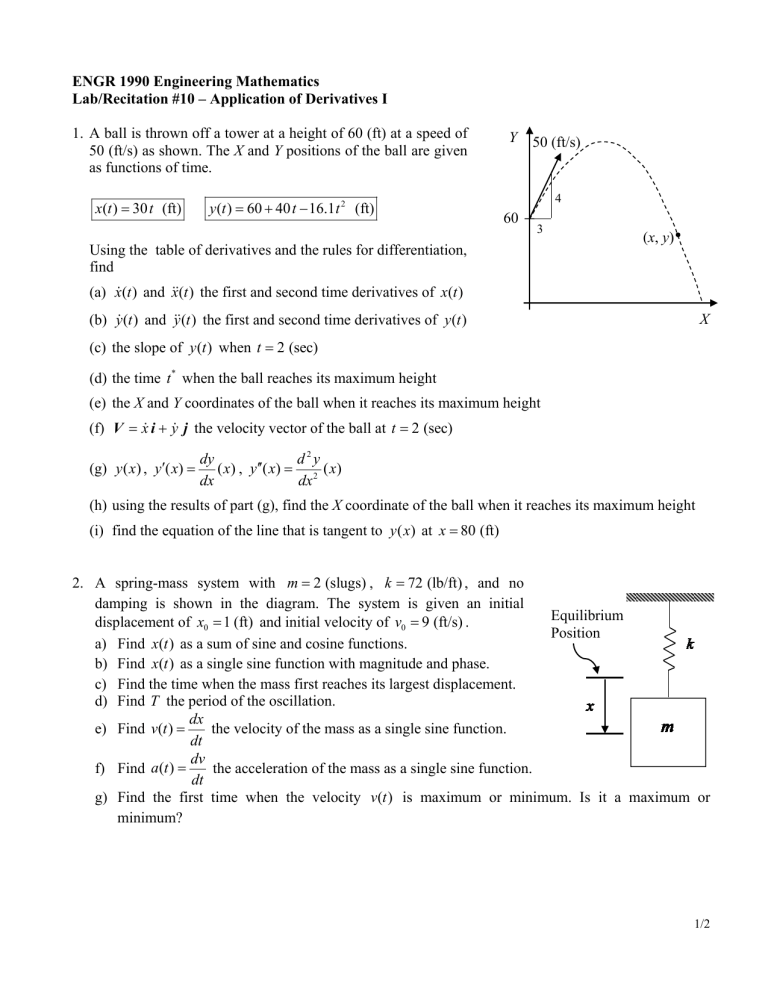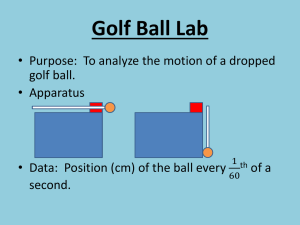1. A ball is thrown off a tower at... X as functions of time.
advertisement

ENGR 1990 Engineering Mathematics Lab/Recitation #10 – Application of Derivatives I 1. A ball is thrown off a tower at a height of 60 (ft) at a speed of 50 (ft/s) as shown. The X and Y positions of the ball are given as functions of time. x(t ) 30 t (ft) y (t ) 60 40 t 16.1t 2 (ft) Y 50 (ft/s) 4 60 3 Using the table of derivatives and the rules for differentiation, find (x, y) x(t ) the first and second time derivatives of x(t ) (a) x (t ) and y (t ) the first and second time derivatives of y (t ) (b) y (t ) and X (c) the slope of y (t ) when t 2 (sec) (d) the time t * when the ball reaches its maximum height (e) the X and Y coordinates of the ball when it reaches its maximum height (f) V x i y j the velocity vector of the ball at t 2 (sec) (g) y ( x) , y( x) d2y dy ( x) , y( x) 2 ( x) dx dx (h) using the results of part (g), find the X coordinate of the ball when it reaches its maximum height (i) find the equation of the line that is tangent to y ( x) at x 80 (ft) 2. A spring-mass system with m 2 (slugs) , k 72 (lb/ft) , and no damping is shown in the diagram. The system is given an initial Equilibrium displacement of x0 1 (ft) and initial velocity of v0 9 (ft/s) . Position a) Find x(t ) as a sum of sine and cosine functions. b) Find x(t ) as a single sine function with magnitude and phase. c) Find the time when the mass first reaches its largest displacement. d) Find T the period of the oscillation. dx the velocity of the mass as a single sine function. e) Find v(t ) dt dv f) Find a(t ) the acceleration of the mass as a single sine function. dt g) Find the first time when the velocity v(t ) is maximum or minimum. Is it a maximum or minimum? 1/2 3. The response of an over-damped, spring-mass-damper system is x(t ) 3 e 5 t 2 e 20 t (ft) Equilibrium Position Using the table of derivatives and the rules for differentiation, find a) b) c) d) v (t ) x (t ) the velocity function a (t ) v(t ) x (t ) the acceleration function x (0), v (0), a (0) the initial position, velocity and acceleration of m the time t * when m has its maximum downward displacement 2/2





